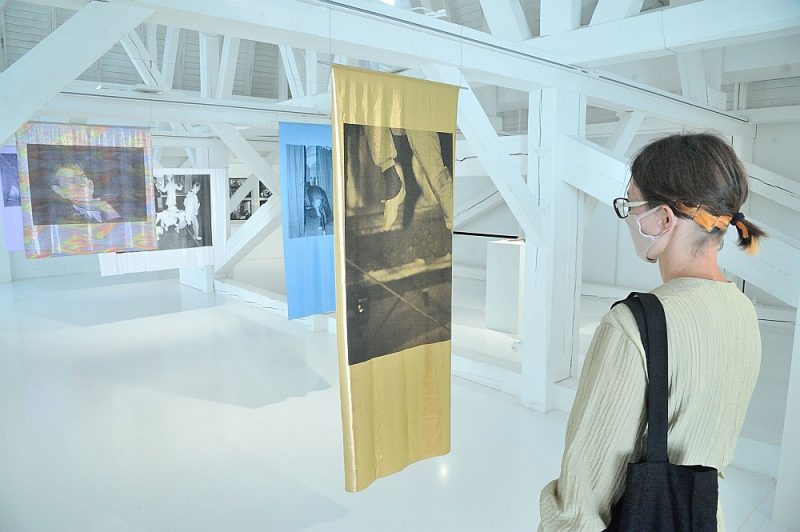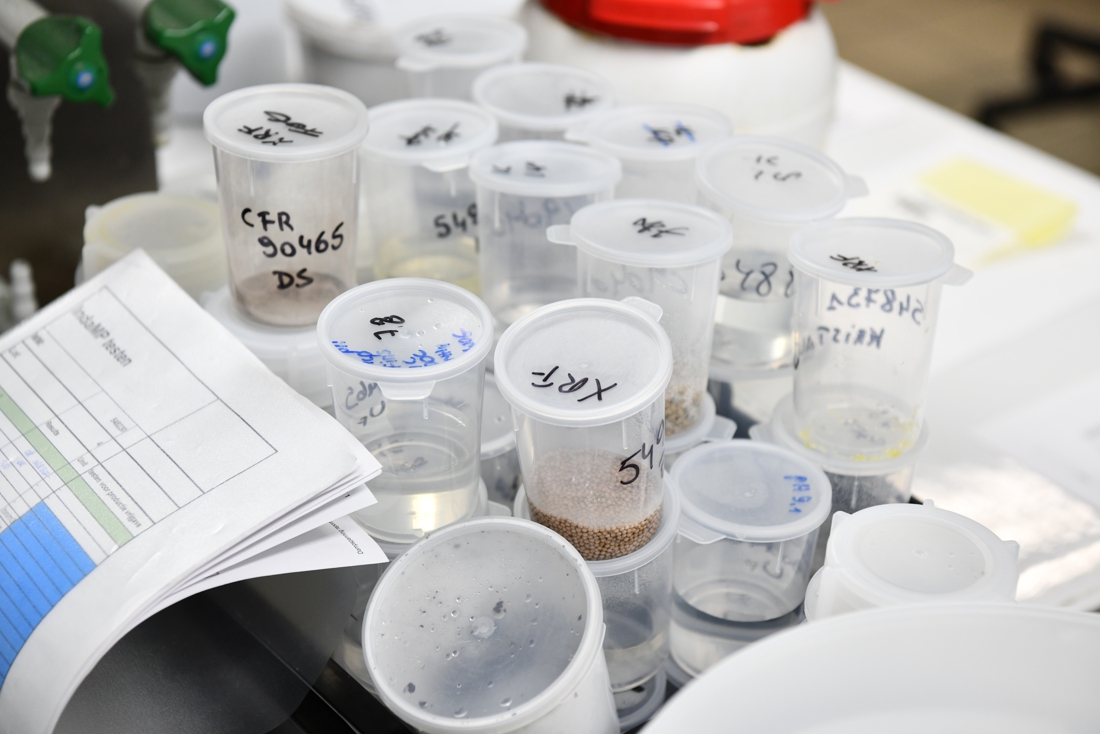
Ieva Epnere tries to capture the essence of the circus, which balances between magical rituals of miracle and social isolation, at the level of mood and metaphors, focusing on specific stories of the Riga circus.
Photo: Timurs Subhankulovs
Santa Hirsch, “Culture Marks”, JSC “Latvian Media”
Until August 22, Ieva Epner’s solo exhibition “Circus Under the Dome” will be on display in the Dome Hall of the Latvian National Museum of Art.
–
The news
“We are afraid to tell the truth that this vaccine is experimental,” Pastor Kalnins demands to explain the purpose of the vaccine.
8 hours
–
The news
“In the autumn, a Molotov cocktail of taxes and a coward is waiting for us.”
4 hours
–
The news
Significantly cooler weather is expected next week. How sharply will the air temperature drop?
1 day
–
Ieva Epner’s solo exhibition “Circus Under the Dome” (curated by Līna Birzaka-Priekule) at the Latvian National Museum of Art combines several stages of the artist’s creative work – a series of photographs by Riga circus artists created in the first half of 2000. the Purvītis Prize, which is the formal reason for organizing this exhibition.
The series of photographs is complemented by various objects, transforming into a space installation that, with Epnere’s usual techniques, metaphorizes the Riga Circus both as a cultural-historical phenomenon and the personal stories inevitably included in it, the people who created it.
It is also common for the artist to be alienated by a passionate but careful observation, which not only documents reality in static and moving images, but also makes these testimonies interact with space, acquiring new visual, three-dimensional forms. All this emphasizes the multi-layered nature of the narratives of the exhibition, weaving the common story from many separate ones.
The artist’s alienated impassioned but careful observation not only documents reality in static and moving images, but also makes these testimonies interact with space.
Photo: Timurs Subhankulovs
The circus is a very popular, even a classic cultural theme, whose carnivalism and marginalism in different eras have captivated and inspired creative minds. The circus is a closed, peculiar world, in which the miraculous has always inevitably included isolation from the everyday outside world.
Nowadays, when more and more attempts are made to abolish “normality” as a criterion for evaluation, the circus also seems to be a natural object of attention, as it has long included “abnormal” and “unnatural”, allowing the community to emerge, exist and survive. inability to fit into a ‘normal’ society due to their characteristics.
The unusual, unusual aura of Epner’s portrayed circus artists also seems almost physically felt and vibrating in their photographs. It is most strongly revealed by browsing the supplementary edition of the exhibition “Riga Circus”, which includes a wider and more diverse range of images. The black-and-white photos selected for the exhibition give an elegantly more restrained impression, but to the end the circus people at least revealed themselves to me in the version of the edition, which has more naturalness and ease.
Ieva Epnere tries to capture the essence of the circus, which balances between the magical rituals of miracle and social isolation, at the level of mood and metaphors, focusing on specific stories of the Riga circus, rather than an abstract, general circus outside time and space. This geographical, spatial specificity is also an essential feature of Epner’s works – although they speak of universal themes and states, they focus on a specific place and specific people, as well as the artist’s specific relationship with that environment, seeking to live as a participant rather than a neutral observer. .
As you know, since 2016, the Riga Circus in its former and Epner fixed form no longer exists and is currently closed for reconstruction. Prior to that, the country banned the use of wild animals in performances, which provoked resistance from circus leaders and artists, escalating into a conflict that reaffirmed the existence of circus people in their own special world, whose internal conditions are difficult to compare with the outside world.
However, they do not want to allow the complete romanticization of this “outsider”, because the traditions of the circus have inevitably included exploitation – both human deviations from the norm and animal training. In this regard, the ridicule expressed by Anita Vanaga in the generally comprehensive educational text published in the publication against the “greens”, who managed to close the circus, was confused, meaning the campaign of the association “Animal Freedom”.
Yes, these changes were certainly not easy for circus artists, and animal training does not necessarily mean sadism, but it is strange to ironize environmental activists at a time when people’s insatiable, selfish desire to see nature as a resource to satisfy their cravings inevitably leads us to devastating natural disasters.

The unusual, unusual aura of Epner’s portrayed circus artists in their photographs seems almost physically felt, vibrating.
Photo: Timurs Subhankulovs
The exhibition “Circus Under the Dome” does not address the social meanings of the circus and the power relations included in it. The exposition highlights the cultural anthropological aspects of the circus, but they seem less attractive compared to what is fixed in the pictures, which is able to speak “on its own” and reveal the life of the circus in a wide range. The most artistically significant element of the exhibition is the dimension of space and movement, their interplay, referring to the architecture of the historic circus building and the significance of its symbolic circle.
The beams of the museum become an essential part of the installation, and the acrobatic architectural constructions of the dome also directly enter the video work filmed at the exhibition venue, resulting in a peculiar duplication and deepening of the space. As the most active exhibit of the exhibition, the video work becomes its culmination, playing the image of Charlotte from Anton Chekhov’s play “Cherry Garden”, the prototype of which was allegedly served by the Latvian magician Johan Strauss.
Exhibiting a video in the place where it was filmed gives the impression of a magic trick, because actors are and are not in the same room with us, just like circus artists are and are not part of “our” society. The images of Guna and Cyril concisely reveal the melancholy tragic fate of the world’s sprayers, entertainers, who, in Epner’s view, embody not only the essence of the circus community, but also the general place of creative people in society, which we mostly push beyond normalcy.
Themes
–


